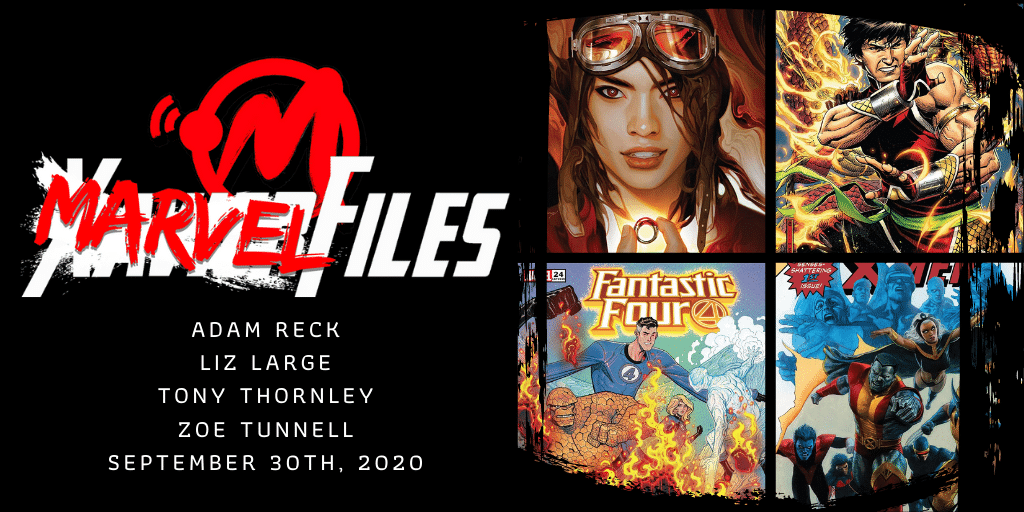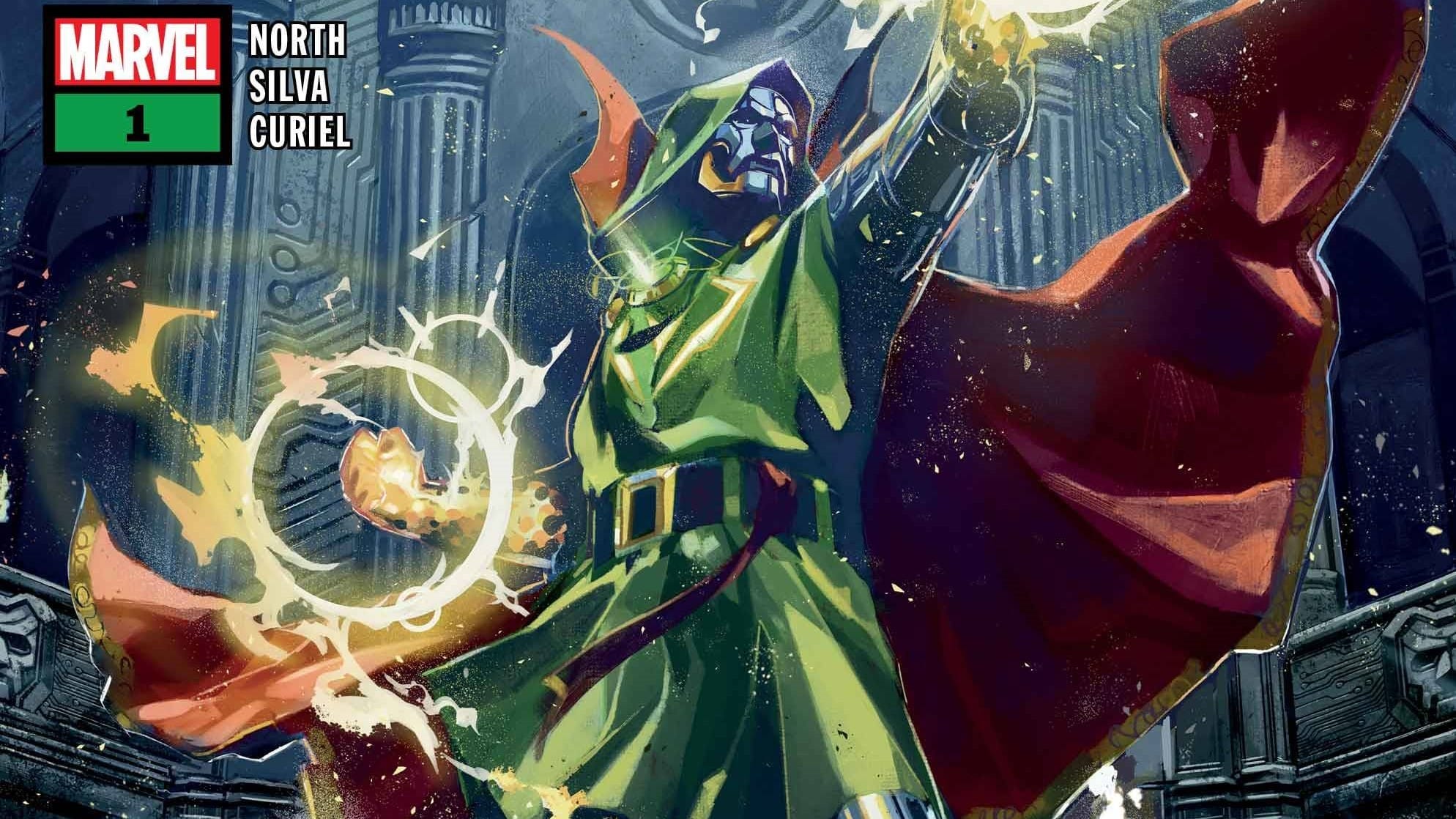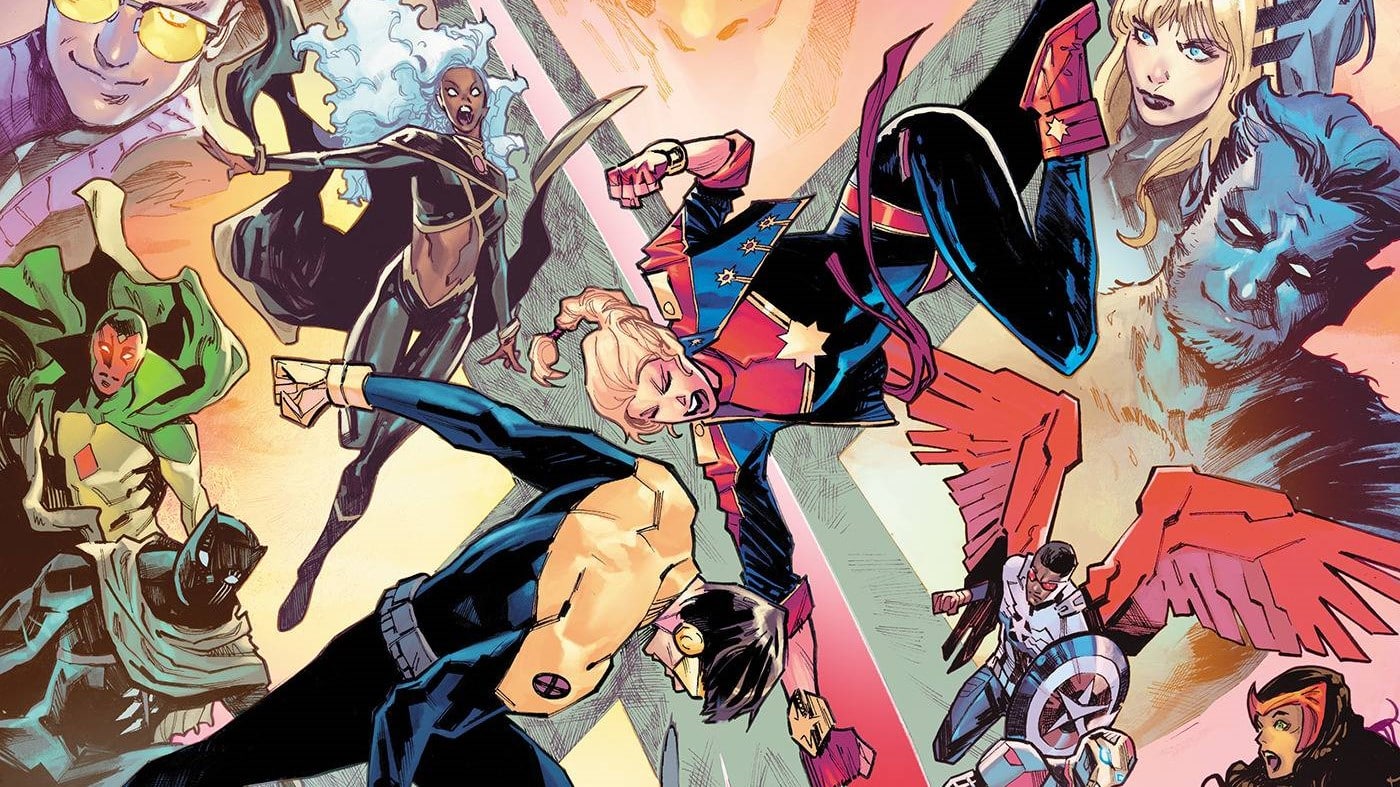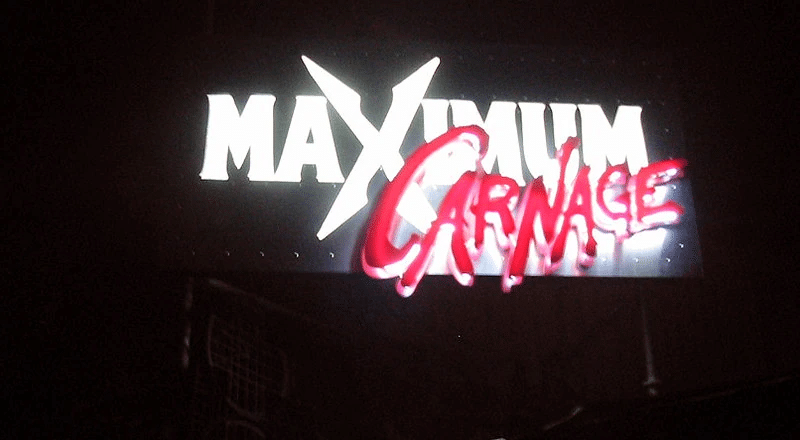Hello friends and readers, after a brief week off we have a giant Marvel Minutiae this week. I stole from Zack both in content and collaborators, and as such Adam Reck will be giving us an artist-eye view on Giant-Size X-Men: Tribute to Wein and Cockrum. Liz Large gives us her thoughts on Star Wars: Doctor Aphra #4, Spider err-Fantastic Four Correspondent Tony Thornley looks into Fantastic Four #24, and last but not least: Zoe Tunnell digs into the hotly anticipated Shang-Chi #1. Have a great week!
Giant-Size X-Men: Tribute to Wein and Cockrum #1
Original Credits:
Written by Len Wein
Art by Dave Cockrum
Colors by Glynis Wein
Letters by John Costanza
New Art Credits: Uhhh, just look at this picture
How many artists does it take to recreate one of if not the most famous one-shot in comics history? Thirty-seven apparently! Forty-five years after the publication of Giant-Size X-Men, the X-office has assembled an all-star roster of artists to pay homage, reinterpret, or give their take on individual pages of the famed issue in which Len Wein and Dave Cockrum redefined the X-Men with an All-New, All-Different team of international newcomers.
X-Men fans will know the history behind the original issue: With sales lagging (though there’s evidence this may have simply been poor reporting to the publisher) on the Silver Age X-Men, the book was languishing in reprints for almost thirty issues. Len Wein and Dave Cockrum came to the rescue bringing together Len Wein’s Hulk adversary Wolverine, Nightcrawler and Storm (pulled almost whole cloth from Cockrum’s proposed additions to DC’s Legion of Superheroes), Colossus, and Silver Age b-listers Banshee and Sunfire. The premise was simple: After the original X-Men are captured by the “Island That Walks Like a Man” AKA Krakoa, Xavier recruits this new band of merry mutants to save his students. Led into the field by Cyclops, the team’s personalities clash, but ultimately teamwork saves the day and they launch Krakoa into space, presumably never to be seen again. They all laugh about “what to do about 13 X-Men.” The irony of there only being 13 X-Men and thinking Krakoa would not be an ongoing concern will not escape longtime readers.
Since Giant-Size Tribute is a showcase for the artists and no changes have been made to Len Wein’s original script, the main draw of the book is seeing which artists were curated for the project and how faithfully or radically they recreate the original subject matter. That’s why to get the most out of this tribute version, I highly recommend reading it with a copy of the original handy (if you’re like most people you don’t have a first print of Giant-Size sitting around, but hopefully you have a color repro either via an Epic collection, Marvel Unlimited, an Omnibus, etc) so you can compare the two.
What’s striking throughout this tribute version is just how many of the artists do not alter Cockrum’s original page layouts. This being a “jam” issue, and seeing how some of the artists did have the freedom to make some big changes, it’s all the more surprising that most chose not to. Some subtly “fix” Cockrum’s visual storytelling, like Kevin Nowlan flipping a panel so that an angry mob looks more like they’re chasing Kurt than running away from him. Joshua Cassara gives a 180 perspective change of a giant crab attack switching from the crabs to our heroes. For the most part though, the issue hews fairly close to the original, a limitation I assume has more to do with each artist only having one page to play with than a need to honor Cockrum.
But while many of the artists don’t make any big moves, when one of the artists does take a risk, or chooses to upend the original page layout, it’s all the more gratifying. Marguerite Sauvage transforms the introduction of Storm into a beautiful and airy collage. She gets rid of panel borders all together in the bottom 2/3rds of the page and lets the imagery overlap, adding to the grandeur of our favorite weather-controlling goddess. Juann Cabal and colorist Federico Blee take on Thunderbird’s introduction and make it panoramic, giving Proudstar’s chase of a wild bison a wider and more dramatic sense of setting. Stephen Segovia and Rain Beredo make Wolverine’s introduction all the more in tune with his tropes by giving Logan’s first (single) claw-pop a larger, stand alone panel and a full bleed horizontal panel as he slashes his supervisor’s tie.
Even though there aren’t many departures from the original source material, it’s hard not to be impressed with many of the individual pages. Alex Ross’s painting of the first page takes the “fires of the future” caption to the next level with a brilliant fireball illuminating the entire new cast as they erupt from a wall of flames. Our Silver Age X-Men look down from above, blending in beautifully with the clouds. Jen Bartel’s high contrast, almost black-lit digital colors illuminate as the Professor, Storm, and Lorna work to launch Krakoa into space. Current House of X-era artists Pepe Larraz, RB Silva, Rod Reis, Marcus To, Matteo Lolli, Joshua Cassara, and Leinil Yu all lend their excellent talents to the book; each looks exactly as good as you might imagine if you were shown the Cockrum original and told the name of the current X-artist who was taking it on.
That’s not to say there aren’t complete outliers included here. The aforementioned Thunderbird intro is followed immediately on the next page by the very cartoony style of Gurihiru, a wild contrast that I wish there was more of. An incredibly glossy full-page spread by Mark Brooks is a good reminder of why his ultra-rendered painting style is ultimately reserved for promotional pieces and covers. Javier Rodriguez and Alvaro Lopez’s page looks simultaneously like it’s pulled straight from the amazing History of the Marvel Universe but also plants a very silly, shark-tooth grin on Krakoa.
Read together, the pages of Giant-Size X-Men Tribute give a very accurate portrait of what Marvel “house style” looks like going into the third decade of the 21st century. While these artists on their own have a host of differences between them, put together, you can see the level of rendering, the kinds of anatomy and the visual styles that Marvel wants on their books right now. It’s all generally in the same “we’d like this to look as spectacular as Stuart Immonen” ballpark. Regardless of whether the individual artists match up with that style, there’s a goal post on display here for how good an artist needs to be to work for the bigger of the “Big 2,” and industry pros and amateurs looking to work on the books should check this issue out as a handy guide.
X-Fans currently engrossed with current tales of Krakoa and the X of Swords crossover may find themselves scratching their head at this project, but we’ve seen similar nostalgia grabs of recent including the unnecessary God Loves, Man Kills redux, Wolverine Bad Blood, and the upcoming Chris Claremont Anniversary Special. This issue wraps up with a trio of interviews as Christine Valada (entertainment attorney and wife of the late Len Wein) and artist Paty Cockrum (wife of the late Dave Cockrum) share loving anecdotes about their respective late husbands, and Chris Claremont tells the story of what it was like to experience the creation of the original issue first hand. This tribute issue straddles a very interesting line, one where the company feels the need to acknowledge its important past even as the creators involved are participating in the current radical transformation of what X-Men can be.
Which side of that line you fall on may decide just how much interest you have in dissecting this curiosity. I for one, would love to see more Tributes like this, of books from different eras and with a wider scope, allowing for more risk-taking and more variety in the art-making. Taken at surface value, this is a fairly straightforward retelling of a very famous comic book which you may find completely superfluous. However, if you’d like a document of the current state of creativity in the now global bullpen of Marvel artists, Tribute more than delivers.
Star Wars: Doctor Aphra #4
Written by Alyssa Wong
Art by Marika Cresta
Colors by Rachelle Rosenberg
Letters by VC’s Joe Caramagna
Like the recap page says, our favorite archaeologist is in “a bit of a mess” as we return for issue 4 of Doctor Aphra. As usual, Aphra’s mission is going terribly. On an expedition to an ancient city to steal valuable and powerful magic rings, Aphra’s been betrayed by grad student Detta (as expected) and by crew member Just Lucky (unexpected!).
As far as betrayals go, Lucky’s isn’t cruel, and he leaves Aphra and the others alive. They’re stuck inside an ancient, booby-trapped crypt, but at least they’re not dead! They are in imminent danger, as the city itself is alive with the potential to drive anyone inside mad—a security system that may have led to the destruction of this society. It’s fun to see the group try to work together despite all the tension between them. The tension between Detta and the rest is great, especially coupled with the prickly history between Eustacia and Aphra. Truly a Fast Five-style moment of enemies devising a plan against a bigger enemy (if The Rock and Vincent Diesel teaming up to fight the real bad guy isn’t your baseline for entertainment I don’t know what to tell you).
Our villain, Ronen Tagge, is as scenery-chewingly evil as you could possibly hope for. He’s not a normal villain, who would want to acquire unique items to display as a symbol of wealth and power. No, Tagge’s particular brand of villainy is obtaining precious items—art, science, historic—and destroying them so no one else can ever have them. Truly a genius foe for an archaeologist, even one as morally grey as Aphra.
All in all, a fun issue that’s clearly setting up a showdown between our hero, her dubiously trustworthy allies, Tagge, and some potentially dangerous rings.
Fantastic Four #24
Written by Dan Slott
Art by Paco Medina
Colors by Jesus Aburtov
Letters by VC’s Joe Caramagna
Hey Dan Slott- please write more of these silly issues. This one was a LOT of fun.
After a tease back in Slott’s first story arc, we finally get to see the untold tale of the F4’s first ever replacement member- Bobby Drake, ICEMAN! When Bobby gives Franklin a ride home from Krakoa, Bobby and Johnny Storm tell the kids about the day that Johnny quit, and Iceman joined the Fantastic Four!
This isn’t a deep substantial issue. This isn’t even a hefty retcon, a la the arc that introduced Sky. It’s a silly untold tale, and Slott knows it. We get debates about whether it was “just” a team-up or Bobby actually joined. We get AIM and Doombots. We even get a very cool new cosmic bad guy, with a silly name that you need to say out loud when you see it (seriously, just sound it out).
Outside of the flashback, the story is even stronger. The family dinner is in honor of Ben and Alicia adopting Jo and Nikki, the Kree and Skrull kids introduced during Empyre. These two kids continue to be an absolute delight, and they make everything around them better just through their presence. We also get Franklin’s life on Krakoa, including a D&D group that consists of exactly the New X-Men you think it would. Slott has expanded the world of the Fantastic Four in the past 24 issues to the point that they feel like a true extended family, with growth that real families see, even if the circumstances are much more fantastic.
Medina’s art really shines here. He’s just on the verge of exploding into a huge name for Marvel, and his versatility is a big reason why. When the story shifts into flashback, so does his style (alongside some VERY fun retro coloring by Aburtov). It recalls Kirby without going full retro (hewing closer to, say, Carlos Pacheco than Kirby himself), and is full of touches and homages to the King.
It’s a lot of fun, and has a lot of easter eggs for X-Men fans, both long-time and current, that makes it worth picking up.
Shang-Chi #1
Written by Gene Luen Yang
Art by Dike Ruan
Flashback Art by Philip Tan
Colors by Sebastian Cheng
Lettered by VC’s Travis Lanham
Launching ahead of the Shang-Chi and the Legend of the Ten Rings film next year, Shang-Chi is about as perfect of a jumping-on point for the character as you could hope for. Maintaining his streak of excellent work from Superman vs. The Klan and New Super-Man, Gene Luen Yang’s grasp of Shang-Chi’s character is both immediate and effective, as is Dike Ruan’s expressive, kinetic pencils on the main story.
Shang-Chi, as a character, has been dealt a rough hand in the past decade. On paper, it seems like he has done well after being a member of Jonathan Hickman’s Avengers and a brief supporting character for Spider-Man, but those roles often left Shang in an unfortunate spot. Cast as equal parts emotionless fighting machine and zen philosopher, Shang-Chi is a character that often feels like he isn’t entirely a character. Luckily, Shang-Chi grounds its lead in some of the most human, compelling character work the Marvel Universe’s top martial artist has seen in years.
Shang-Chi is introduced working a mundane job in a shop in San Francisco’s Chinatown. While he tries to enjoy living a quiet, everyday life for the first time he can remember, everyone around him serves only to remind him that he has never been normal. His accent is strange because his father was from the Qing dynasty, he carries a reputation of coming from a bad family, he can’t even flirt with a cute girl without thinking about how strange it is to have a beautiful woman talk to him without holding a weapon.
The most impactful moment in the issue comes when Shang-Chi is asked by an old friend why he “talks like a fortune cookie” when speaking English, only for Shang to sadly think to himself about how it is the only way that westerners would pay attention to him. Yang’s character muscles are at work throughout the issue, showcasing why he has more than earned his reputation as one of the most reliably great writers in the business.
Of course, it is a Shang-Chi title, so of course, Shang-Chi is filled with martial arts action in between the character beats, and they certainly don’t disappoint. Philip Tan’s loose, scratchy linework fits the flashback sequences well, but Dike Ruan’s work in the present is an absolute delight. Expressive and detailed enough to carry the quiet moments and fluid and kinetic enough to make each fight scene exude raw energy. Ruan’s gonna be an artist to follow, after this book.
Overall, Shang-Chi does precisely what it sets out to do. It provides a perfect place for the many people wanting to get to know the character ahead of his blockbuster debut to jump in. The additions to Shang-Chi’s backstory are fun and exciting enough to provide good hooks for the rest of the miniseries. Most importantly of all, it does right by Shang-Chi as a character and gives him the spotlight he has so sorely needed.










